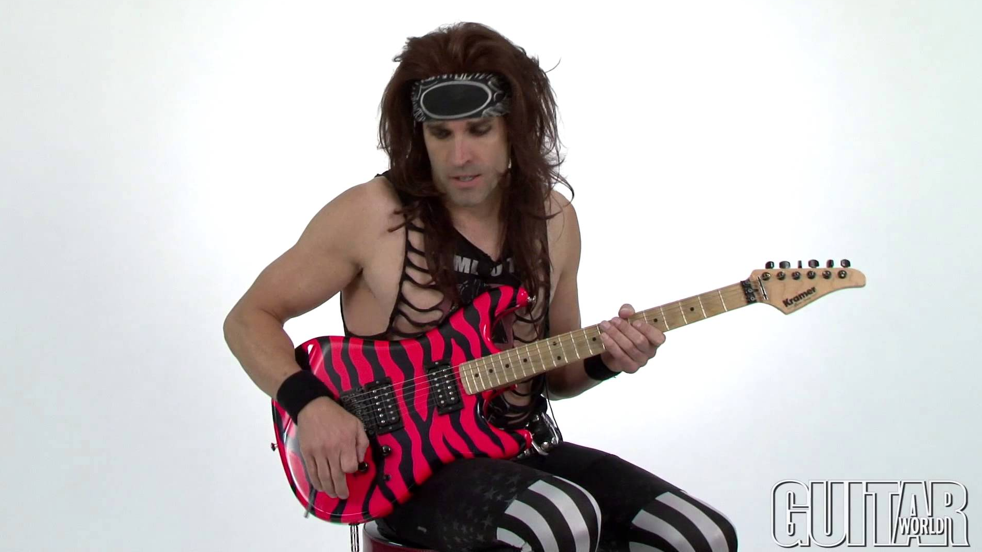Man of Steel with Steel Panther's Satchel: How to Play "If You Really, Really Love Me" — Video

When you see me holding an acoustic guitar, I know what you’re thinking...Satchel! Have you gone country?
Hey, if I just played music to become rich, then yes, I’d go country. But I'm a metal guitar player, and I play the guitar because I love metal! A lot of great metal music features the acoustic guitar all over the place. Go ask Jimmy Page!
Our unbelievably good album, Balls Out, features the song “If You Really, Really Love Me,” for which I performed the rhythm guitar tracks on acoustic and played the solo on electric.
FIGURE 1 shows the verse rhythm part: for every chord in this progression, I include the open top two strings, which fills out the sound of the chords while also widening them harmonically. For example, the first chord is constructed from a fretted B5 power chord shape on the A, D and G strings but also includes the open B and high E strings.
The B string doubles the root note while the high E string adds the fourth, resulting in a Bsus4 chord, or B5add4. For the second chord, I lift my ring finger off the D string and move my index finger from the A string over to the D string’s second fret, while keeping the top three strings the same as the previous chord, with the pinkie still planted on the G string’s fourth fret. Over the A root note, the E notes become the fifth while the B notes become the second, resulting in an Asus2 chord. I then barre my index finger at the second fret on the A and D strings to form a big E5 chord. You will hear voicings very similar to all of these chords in the Rush classic, “Limelight.”
In bars 5 and 6, I move the fretted root-fifth-root shape up three frets to sound D6sus2 and then two more frets to sound a higher E5 voicing, keeping the open top two strings ringing the entire time. For the last three bars of the section, I alternate between Csm7add4, Asus2 and Bsus4, using minimal fret-hand movement from chord to chord.
The song’s brief solo section (see FIGURE 2) modulates down a whole step and is played over the progression A5-G5-D5, and my solo phrases are based on a combination of the A Mixolydian mode (A B C# D E F# G) and the A major pentatonic scale (A B C# E F#). My overall concept here was to create an instrumental countermelody within the song, or a “composition within a composition.” Approaching a solo this way is often much more musically effective than just improvising a bunch of fast licks.
All the latest guitar news, interviews, lessons, reviews, deals and more, direct to your inbox!
In bar 4, I combine string bends with some fretboard tapping: on beats two and four, I hold a whole-step bend on the high E string and then apply a pick-hand tap. The first time, I tap at the 22nd fret, then pull-off before releasing the bend. The second time, I hold the tap while gradually releasing the bend, then pull-off to sound a high B root note right as the chord changes back to Bsus4 for the beginning of the next verse.
